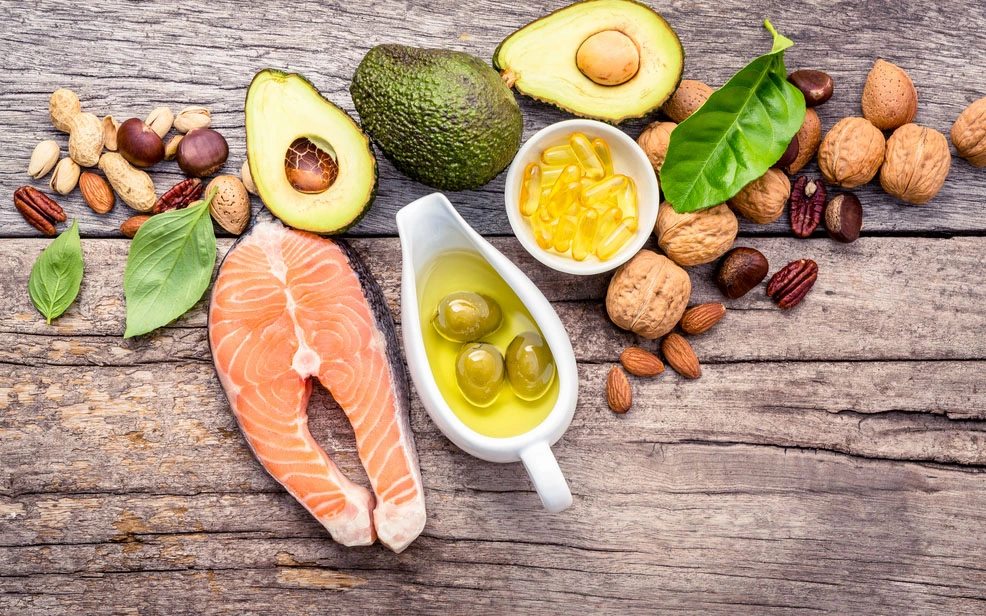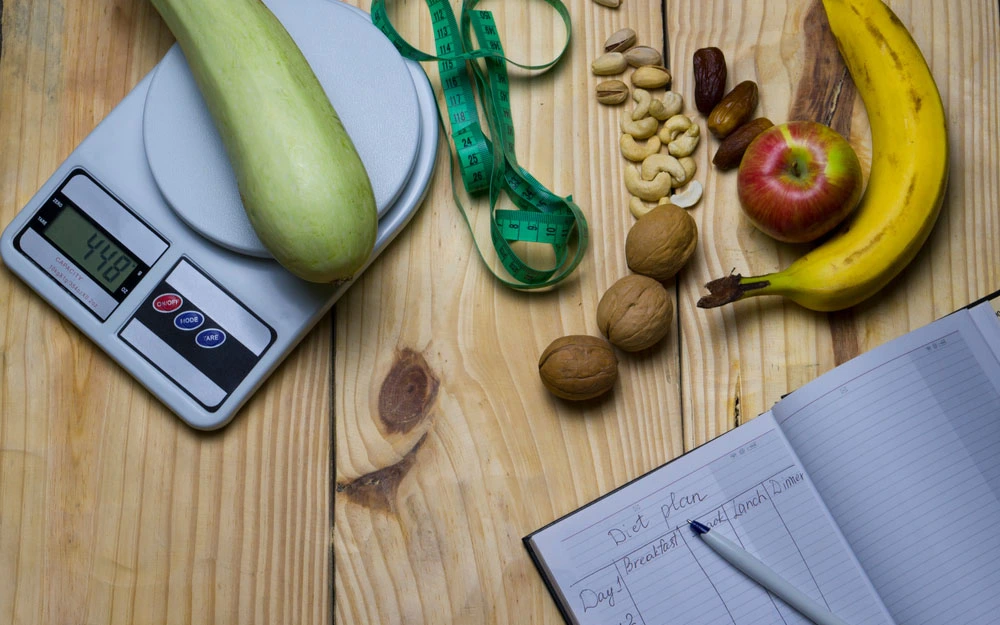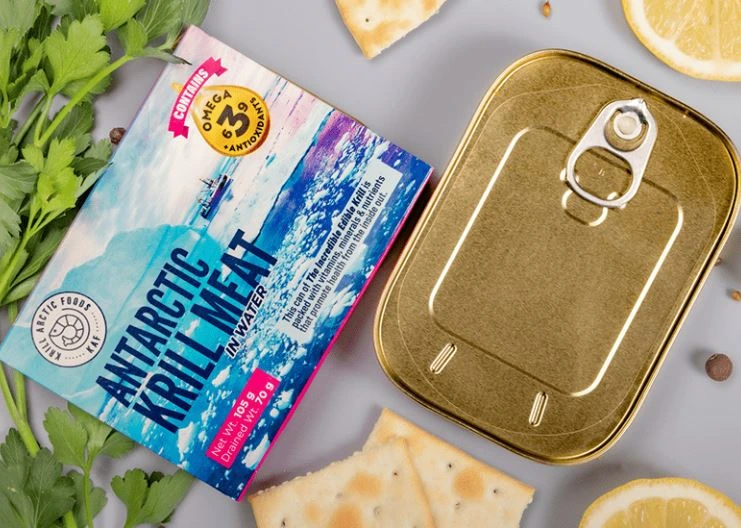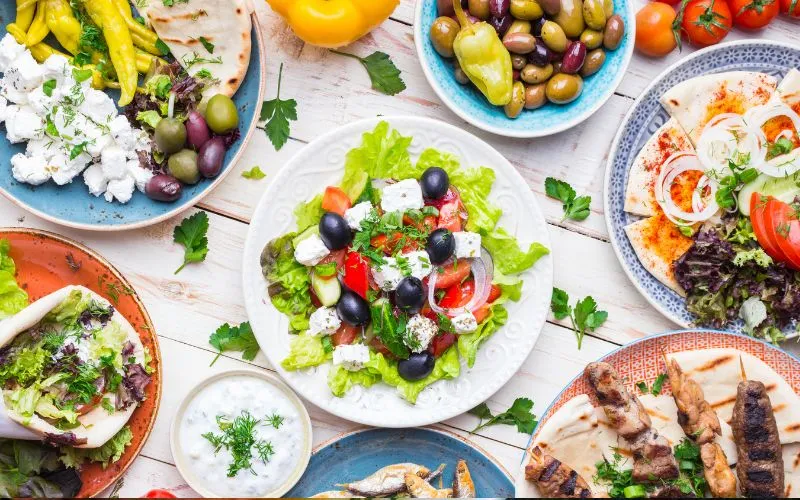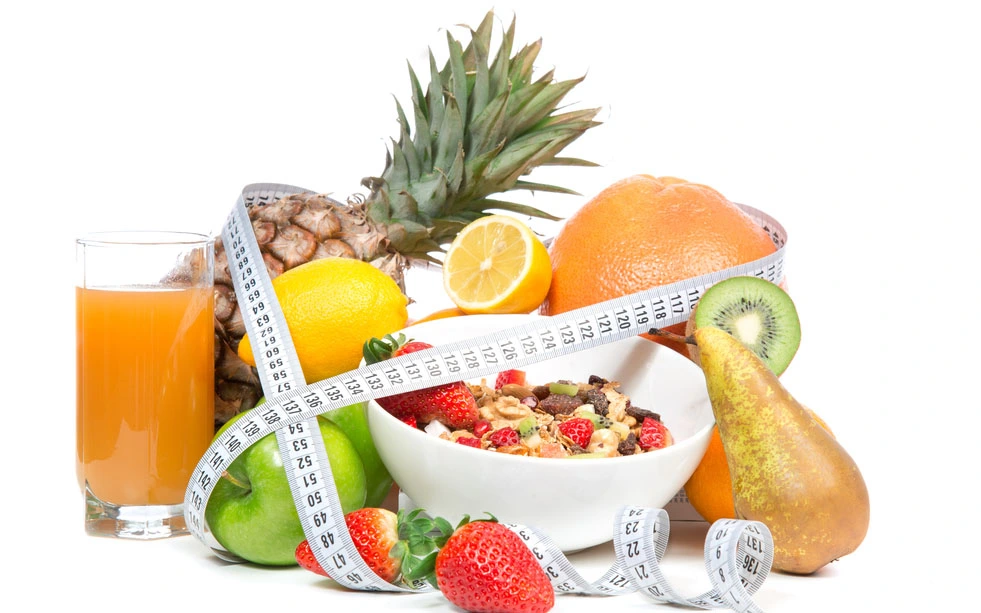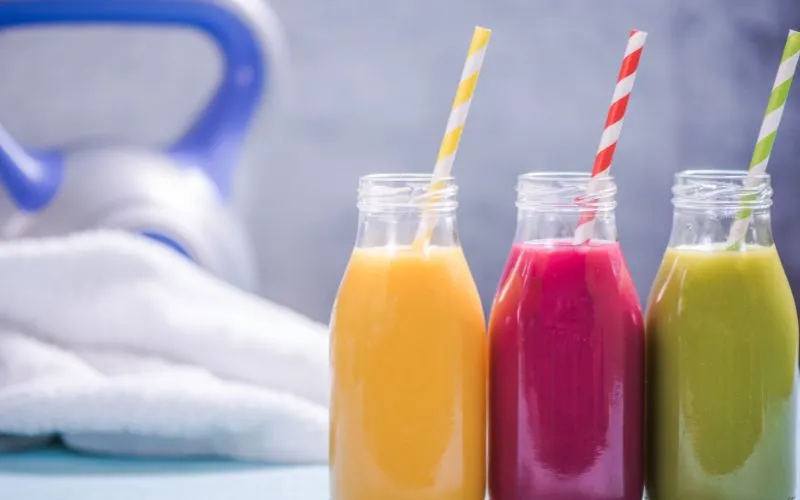- Home /
- The Ultimate Insulin Resistance Diet: Meal Plan for Weight Loss
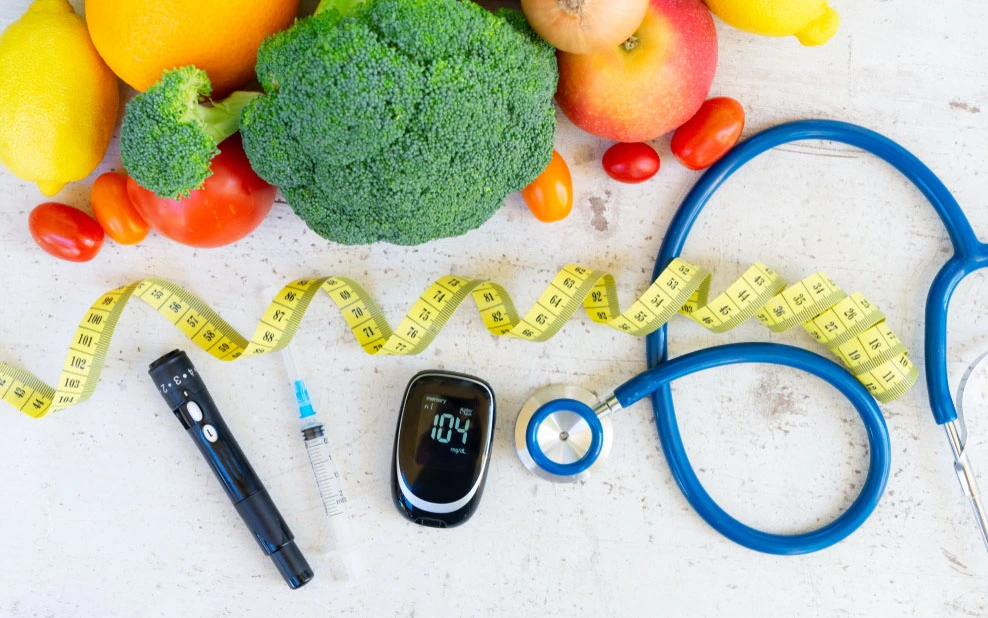
Posted On:April 12th, 2024
The Ultimate Insulin Resistance Diet: Meal Plan for Weight Loss
Navigating through the evergreen field of nutrition, an insulin-resistant diet might just be your beacon of health. Rooted in nutrient-dense foods that regulate blood sugar levels, this carefully curated palate caters to everything from high-fiber veggies to lean proteins, all dressed with healthy fats. Beyond offering a potential divine gastronomical experience, dodging refined carbs and sugary bullets stimulates weight loss like the blooming flowers in springtime.
The key components of an insulin resistance diet include plenty of vegetables, especially dark green leafy veggies, ample fruit, high fiber foods like almonds and lentils, limited carbs by choosing whole grains over processed options, lean proteins such as fish and poultry, healthy fats like olive oil, and low-fat dairy. It is essential to prioritize these food groups while minimizing processed foods with added sugar, fat, salt, saturated and trans fats, and sweetened drinks like soda.
Nutritious Foods for an Insulin Resistance Diet
Regarding an insulin-resistant diet, the focus is on consuming nutrient-dense foods that contribute to steady blood sugar levels. This diet’s key components are high-fiber options, lean proteins, healthy fats, and whole grains. Let’s take a closer look at each of these food groups and why they’re beneficial:
High-Fiber Options: Leafy Greens, Broccoli, and Berries
Leafy greens like spinach and kale, along with broccoli, are excellent sources of fiber. They contain components that slow down the absorption of sugars in the bloodstream, preventing rapid spikes in blood sugar levels. Fibrous foods also support healthy digestion and contribute to a feeling of fullness without flooding the body with excess carbohydrates.
Lean Proteins: Fish, Poultry, and Legumes
Lean proteins play a critical role in an insulin-resistant diet. They include fish such as salmon and trout and poultry like chicken and turkey—both without the skin. Additionally, legumes like lentils and chickpeas are excellent plant-based protein sources. These proteins help promote a feeling of satiety, reducing cravings and tempering insulin spikes after meals.
Healthy Fats: Avocados, Nuts, and Olive Oil
Healthy fats from sources like avocados, nuts (almonds, walnuts), and olive oil are essential for managing insulin levels. Consuming these fats in moderation supports better insulin sensitivity in cells. Furthermore, they aid in keeping hunger at bay while providing vital nutrients for overall health.
Whole Grains: Quinoa and Oats
Whole grains offer a sustained release of energy without causing dramatic blood sugar spikes. Quinoa, for instance, is high in fiber and protein while being relatively low on the glycemic index—a measure of how quickly a food causes blood sugar to rise. Oats provide similar benefits and can be included in breakfast dishes or healthy snacks to aid in stable energy release throughout the day.
Thus, incorporating these nutrient-dense foods into your diet helps support balanced blood sugar levels while providing essential nutrients for overall health.
Food Items to Evade
When considering an insulin resistance diet, it’s crucial to recognize that your foods can significantly impact your blood sugar levels. By being mindful of what you consume, you are taking steps to manage your insulin and blood sugar more effectively. Here are the food items to be cautious of:
Refined Carbohydrates
Refined carbohydrates like white bread, sugary cereals, and pastries should be cautiously approached. The body rapidly processes these foods into glucose, leading to quick spikes in blood sugar levels that can strain the body’s ability to produce insulin effectively. This can contribute to insulin resistance over time and increase the risk of developing type 2 diabetes.
Foods High in Added Sugars
Another category of foods to watch out for is those high in added sugars. This includes sugary beverages, candy, and baked goods. The ingestion of these items can result in swift blood sugar elevation. Regularly consuming such foods can lead to insulin resistance, making it harder for cells to take up glucose from the bloodstream and eventually causing various health issues.
Saturated and Trans Fats
Processed snacks, fried foods, and fatty cuts of meat tend to contain high amounts of saturated and trans fats. These fats have been linked to insulin resistance and inflammation, which could exacerbate the condition if consumed excessively. Limiting such food intake and opt for healthier fat sources instead is advisable.
Packaged and Processed Foods
Packaged and processed foods often contain high levels of sodium and artificial additives, which can impact insulin sensitivity. Excessive consumption of these additives has been associated with decreased insulin sensitivity, offsetting the delicate balance that individuals with insulin resistance strive to maintain.
Choosing foods thoughtfully and being mindful of their implications for blood sugar levels is vital when managing insulin resistance. By removing these problematic food items, you’re actively working towards stabilizing your blood sugar levels and supporting overall health.
Guidelines for Structuring an Insulin Resistance Diet
Establishing a well-structured meal plan and understanding macronutrient balance are crucial for managing insulin resistance. Here are some key guidelines for planning your daily meals.
Balancing Macronutrients
To maintain stable blood sugar levels, it’s important to prioritize a balanced intake of carbohydrates, proteins, and fats. This not only helps in managing blood sugar levels but also supports overall health. Incorporating various nutrient-dense foods such as high-fiber vegetables, lean proteins, and healthy fats can aid in achieving this balance.
Balancing macronutrients means finding the right mix of food groups to regulate your blood sugar levels effectively. Proteins and fats can help slow down glucose absorption from carbohydrates, preventing rapid spikes in blood sugar after meals. Opting for whole grains over refined options can also contribute to a steadier release of energy throughout the day.
Incorporating Low Glycemic Index Foods
Focusing on consuming foods with a low glycemic index (GI) is instrumental in managing insulin resistance. Low GI foods such as lentils, sweet potatoes, and non-starchy vegetables can prevent rapid spikes in blood sugar, providing a more gradual and sustained release of glucose into the bloodstream.
Regularly including low-GI foods in your meals can help maintain steady blood sugar levels throughout the day, reducing the likelihood of extreme fluctuations that can strain the body’s ability to manage insulin effectively.
Portion Control and Regular Eating Schedule
Managing portion sizes and aiming for regular, structured meals is vital for individuals with insulin resistance. Consistently spacing out your meals can help prevent extreme fluctuations in blood sugar levels throughout the day.
Creating an eating schedule and sticking to it helps the body regulate blood sugar more effectively, avoiding significant swings that could pose challenges for individuals with insulin resistance. Furthermore, portion control ensures that you’re mindful of the quantity of carbs, proteins, and fats you consume during each meal.
Monitoring Carbohydrate Intake
A critical aspect of meal planning for insulin resistance involves monitoring carbohydrate consumption. Opting for whole grains and complex carbohydrates over refined and processed options supports steady energy release and prevents rapid increases in blood sugar levels post-meals.
Evaluating the quality of carbohydrates consumed plays a significant role in managing insulin sensitivity. Whole grains offer essential nutrients and dietary fiber, aiding in maintaining optimal blood sugar control over time compared to their refined counterparts.
By prioritizing macronutrient balance, incorporating low-GI foods, adhering to portion control, and monitoring carbohydrate intake, you can structure your meals to promote stable blood sugar levels and support overall metabolic health.
Additional Healthy Lifestyle Practices for Insulin Resistance
In addition to making dietary changes, it’s important to incorporate holistic lifestyle practices into your routine.
- Regular physical activity and exercise significantly improve insulin sensitivity and aid weight management. Exercise helps the body utilize glucose more efficiently and promotes weight loss, a key factor in managing insulin resistance. Simple activities like walking, swimming, or cycling for 30 minutes daily can substantially impact your overall health and well-being.
- It’s not just about rigorous workouts; simple movements such as taking the stairs instead of the elevator or stretching during work breaks can also contribute positively to your physical health. Regular physical activity helps regulate blood sugar levels and reduces the risk of developing related complications, making it an integral part of your insulin resistance management plan.
- When discussing healthy lifestyle practices, we must recognize the impact of stress reduction techniques on insulin resistance. Techniques such as mindfulness, meditation, and ensuring adequate sleep are incredibly beneficial. Stress hormones can affect blood sugar levels and lead to insulin resistance. Mindfulness and meditation can help manage stress levels, positively influencing insulin sensitivity and blood sugar regulation.
- Furthermore, adequate sleep is vital, as lack of sleep can impact glucose metabolism and insulin sensitivity. Incorporating a regular sleep schedule and creating a calming bedtime routine can improve overall health and insulin management.
- Monitoring overall calorie intake is also an important aspect of managing insulin resistance. Making informed choices to support weight loss and overall health can significantly impact insulin sensitivity. It’s crucial to be mindful of portion sizes and food quality. Each meal should have a balanced combination of nutrient-dense foods, focusing on high-fiber vegetables, lean proteins, and healthy fats.
As you progress with your dietary changes and lifestyle adjustments, it is highly recommended that you seek support from a qualified dietitian or healthcare professional. A personalized approach under the guidance of professionals ensures that you receive tailored advice based on your specific needs and health condition. It also allows for regular progress monitoring, making it easier to track improvements and make necessary adjustments to your insulin resistance management plan.
By integrating these additional healthy lifestyle practices with your insulin resistance diet, you can create a comprehensive approach that addresses various aspects of your well-being while effectively managing insulin resistance.
Insulin Resistance Diet’s Impact on Health
An insulin resistance diet isn’t just about managing blood sugar levels—it also brings a spectrum of health benefits beyond diabetes prevention. Let’s explore some of these positive impacts on health and wellness:
Improved Blood Sugar Control and Reduced Risk of Type 2 Diabetes
Individuals can control their blood sugar levels better by adopting an insulin resistance diet. This is particularly crucial for those at risk of developing type 2 diabetes. Balancing carbohydrate intake and opting for low-glycemic index foods as part of the diet can contribute to improved blood sugar management, potentially reducing the likelihood of progressing to type 2 diabetes and providing a crucial shield against the complications associated with the condition.
Better Weight Management and Reduced Risk of Obesity-Related Complications
An insulin resistance diet can also play a key role in weight management. Reducing simple carbohydrates and increasing fiber-rich foods can aid in maintaining a healthy body weight. With better weight control, individuals are less likely to experience obesity-related complications, such as heart disease, joint problems, and respiratory issues, effectively empowering them to take charge of their overall well-being.
Lowered Risk of Cardiovascular Diseases and Improved Lipid Profile
The positive effects of an insulin resistance diet also extend to cardiovascular health. Focusing on lean proteins, fiber-rich foods, and healthy fats can reduce one’s risk of developing cardiovascular diseases. Adhering to this dietary approach tends to favorably influence lipid profiles, contributing to the maintenance of heart health.
Enhanced Energy Levels and Reduced Risk of Energy Crashes
An added benefit of an insulin-resistant diet is its potential to stabilize energy levels throughout the day. Unlike diets high in refined sugars and processed starches that often lead to energy crashes, this dietary approach offers a steadier energy supply due to its emphasis on balanced nutrient intake. Individuals will likely experience sustained energy levels without the roller-coaster ride associated with fluctuating blood sugar levels by choosing whole grains, lean proteins, and healthy fats.
Adopting an insulin resistance diet isn’t just a preventive measure—it’s a proactive step toward optimizing overall health and well-being. From improved blood sugar control to enhanced energy levels, the impact extends across various facets of health, ultimately fostering a healthier and more vibrant lifestyle.
Simple Insulin Resistance Diet Meal Plans and Recipes
Following an insulin-resistant diet doesn’t have to be bland. With the right ingredients, it can be quite delicious and satisfying. One such ingredient is krill meat. Rich in omega-3 fatty acids and a good source of lean protein, krill meat offers a range of health benefits for those managing insulin resistance. Its versatility includes it in various healthy meal options, from salads to stir-fries and grain bowls.
Let’s start with a simple yet flavorful recipe incorporating krill meat: Krill Stir-Fry with Mixed Vegetables.
This dish combines the goodness of colorful vegetables with the protein-packed krill for a satisfying meal. Here’s a quick rundown of the ingredients you’ll need:
- Fresh or frozen krill
- Assorted mixed vegetables such as bell peppers, broccoli, carrots, and snap peas
- Aromatic ingredients like garlic, ginger, and scallions
- Soy sauce or tamari for seasoning
- Olive oil or avocado oil for cooking
Heat some oil in a pan or wok to prepare the dish. Once hot, add the minced garlic, ginger, and scallions to infuse their flavors into the oil. Then, toss the mixed vegetables, allowing them to cook until they’re tender-crisp. Next, add the krill and continue cooking until they turn pink and opaque.
This vibrant stir-fry provides a colorful array of nutrients from the veggies and delivers the heart-healthy benefits of omega-3 fatty acids from the krill. It’s a perfect example of how incorporating krill into your meals can be nutritious and delicious.
Krill Stir-Fry with Mixed Vegetable Recipe
| Ingredients | Instructions |
| Fresh or frozen krill | Add to the stir-fry after the vegetables are cooked |
| Assorted mixed vegetables | Sautee until tender-crisp |
| Garlic, ginger, scallions | Infuse flavor into hot oil |
| Soy sauce or tamari | Use for seasoning |
| Olive oil or avocado oil | Heat in the pan |
Another fantastic way to feature krill in an insulin-resistant diet is through Krill and Avocado Salad. This refreshing salad combines avocado’s creaminess with the delicate krill flavor. It’s a breeze to make and serves as a light yet satisfying meal option rich in healthy fats and high-quality protein.
By providing easy-to-follow recipes that showcase the versatility of krill meat in healthy meal options, individuals following an insulin-resistant diet can discover new ways to enjoy their meals while reaping the nutritional benefits of this exceptional ingredient.
Related Posts
Shop
Products You May Like
Lorem Ipsum is simply dummy text of the printing and typesetting industry
m Ipsum is simply dummy text of the printing and typesetting industry.

